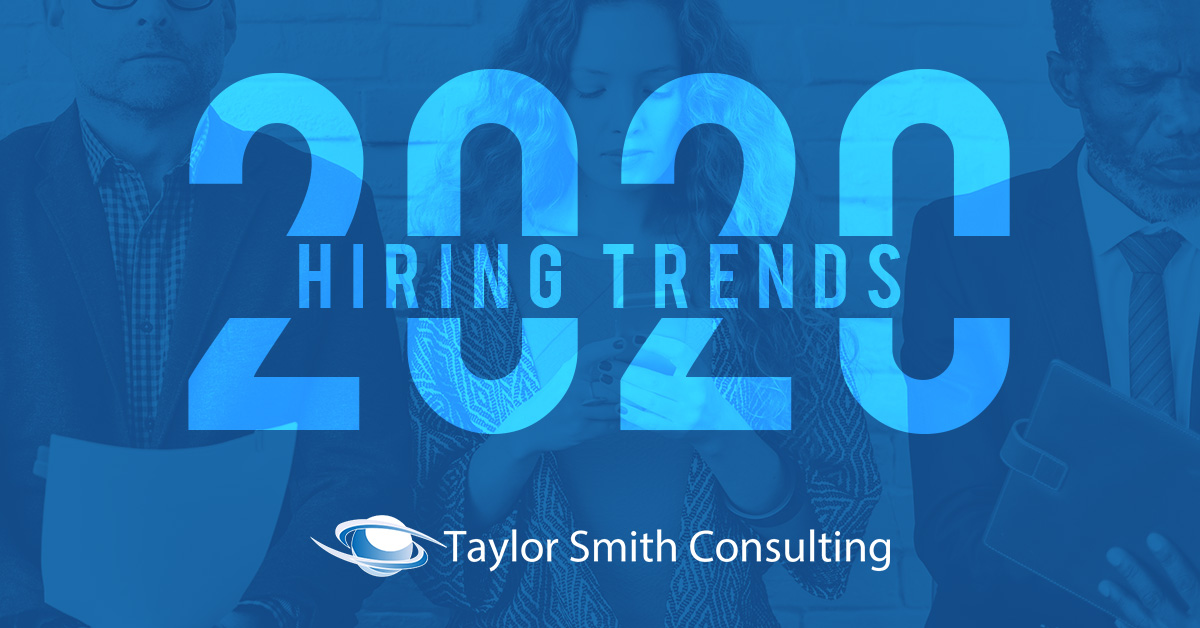While it’s hardly a surprise to say that technology is at the forefront of next year’s hiring trends, it is finding the right balance between traditional and digital channels that will be the key to successful recruitment in 2020 and beyond.
These are what we believe to be four important trends human resource professionals should be aware of in the new decade.
Chat Bots
You may (or may not) have noticed quite a few retail sites have transitioned from having their chat features manned by people to at least screening initial chat conversations with artificial intelligence before referring them to a living, breathing, typing person. Rather than refer people to a website full of FAQs, chatbots use artificial intelligence (AI) technology and natural language processing to find and answer people’s questions with the specific information the person needs. Why make a customer sift through information they don’t need when it’s better to provide them the answer more quickly? When applied to the hiring process, this type of tech can be valuable for candidate engagement. Oftentimes candidates have the same questions come up again and again. Rather than have staffing professionals take time to answer the in the same way, again and again, bots can inform and keep candidates engaged in the process.
More Candidates Will Embrace the Mobile Job Search
Today, an estimated 81 percent of Americans own a smartphone, according to Pew Research Center. What’s more, the World Advertising Research Center (WARC) estimates that in just five years, 72.6 percent of internet users will exclusively access the web through a smartphone. In other words, in the twelve years since the debut of smartphones, mobile devices have become embedded in our daily lives, playing a key role in everything from dating to shopping and navigation to banking and more. What else are Americans are using their phones for? Finding and applying to jobs. Many employers have evolved their job application experience to keep up with today’s technology.
A Glassdoor study found that mobile job seekers encounter multiple barriers to entry in the application process. Most companies have not yet created a truly mobile-first experience, and as a result, companies are turning high-quality candidates off of their organization. In fact, mobile users complete only about 22 percent of applications they start versus 47 percent on desktop. And when the median time to complete a job application on mobile is 10.5 minutes compared to just 5.9 minutes for desktop users, it’s no wonder. If you don’t want to lose out on top talent, you’ll want to make a mobile-friendly application process a top priority. Don’t worry, though — even small steps toward improving your mobile job search experience can reap serious rewards. Taylor Smith Consulting has addressed this employing a mobile-optimized version of our career site, which helps mobile users apply to jobs in just a few short clicks, result in a much more mobile-friendly experience.
Retraining and Reskilling
The trend of reskilling meets the challenge of a talent shortage by widening the scope of the staffing agency from scouring for talent to creating talent. If it takes hold, this 2020 staffing trend will be an exciting expansion of the talent acquisition industry. Candidates might have one kind of skill, but be ready and willing to learn another kind of skill better matched to the needs of industries in the current economy.
By investing in online learning, training programs, or apprenticeships, staffing agencies can better meet client demands by targeting candidates who may have potential, and then ensuring that talent is fostered and “upskilled.” While this trend isn’t about tech—it still sort of is. Companies that need tech-savvy labor will be most interested in this 2020 staffing trend.
Human Resource Analytics
HR analytics is one of the most critical innovative trends that can help analyze and identify the problems. Since HR analytics utilizes a data-driven approach, HR professionals can now collect better data to allow them to analyze, understand, and make use of the collected data to execute objective-based decisions instead of judgments or intuitions.
Organizations have to be open about using HR analytics to have complete control of the information and statistics of the company. Having full control of the information and statistics of the company can help identify situations or areas that are facing a problem to help find better solutions.
For instance, analyzing the metrics of resignation rates can help identify why there is an increase in that particular metric. The organization can then look at the metrics connected to the resignation rates such as promotions, performance, engagement, and pay increases. Thus, letting them know where have they gone wrong and what they can improve to fix it.
Being aware—and further, staying ahead of human resource trends is essential for any industry because it can help improve overall talent acquisition and retention. Prioritizing foresight and planning can give an organization the competitive edge needed to hire and keep the very best talent.






